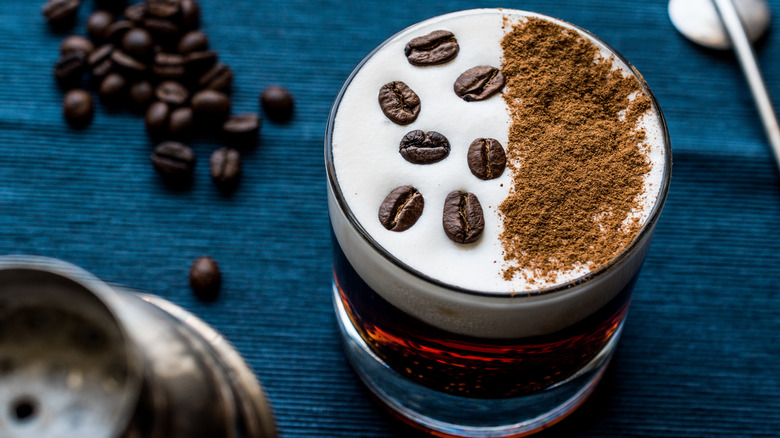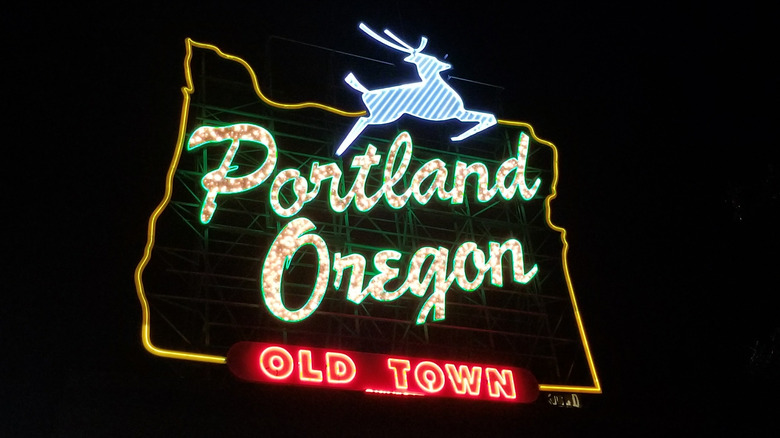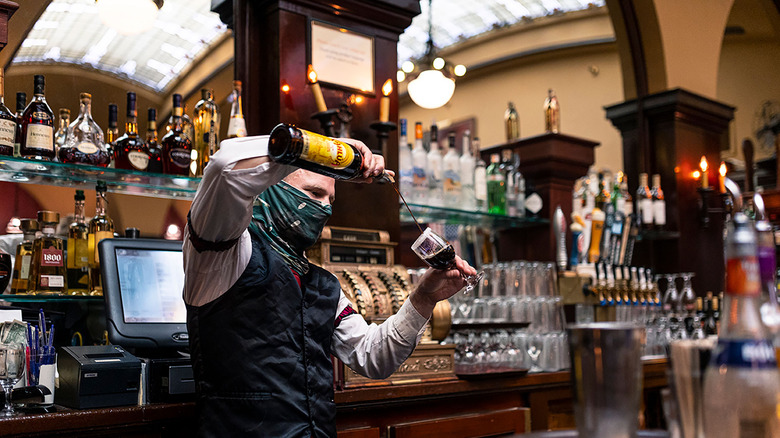Spanish Coffee Might Not Be What You Think
Words can be misleading, especially when it comes to food. Welsh rabbit (also known as rarebit) contains no trace of formerly hopping leporidae; in reality, it's the name for a bubbling combination of mustard- and anchovy-spiked cheese sauce served over toast. Likewise, the French fry has long been a subject of chagrin for the historically exacting gastronomes of la France, who will tell you that it actually hails from Belgium. What's more, National Geographic says the fried-food favorite may have been discovered by American soldiers stationed in the European country during World War I.
Similar hoodwinkery surrounds the so-called Spanish coffee. Not to be confused with specialty coffee drinks popular in Spain, Spanish coffee is a boozy concoction that's only known as such in the United States. "Order a Spanish coffee in Spain, and you're more likely to be served a simple pour of coffee with brandy or rum, also called a Carajillo and dating back more than a century," writes Imbibe Magazine. Here's what the drink is all about, from its ingredients to its origin story.
Spanish coffee from ... Oregon?
Other than being the oldest restaurant in the Oregon city of Portland, Huber's Cafe, established in 1879, is best known for its signature Spanish coffee. There's a good reason for this. With the gusto of a chef lighting up a bananas foster at an old-school steakhouse, the Huber's server who brings you the caffeinated cocktail leaves the kitchen for a table-side preparation — or, to use a more accurate word, performance — in which the highly flammable boozy base of the drink is set ablaze. With 151 rum, Kahlúa, triple sec, coffee, lime, sugar, and cream, Huber's Spanish coffee certainly takes inspiration from the flavors of La Piel de Toro. (If you want to make one yourself, sans fire, KGW can walk you through it.)
Willamette Week writer Matthew Korfhage once likened the spectacle to a "ritualistic fire dance." Korfhage further explains that, while a former Huber's owner (a member of the Louie family, which still helms the restaurant) claims to have invented the drink in 1975, he's merely responsible for the pageantry that now surrounds it. It had past lives — albeit less famous ones — in two other establishments, neither of which was located in Spain.
From Mexico to Oregon
When former Huber's owner Andrew Louie passed away, he left operations to his three children. Not only did his son James become the manager — a position he still holds as of this writing — he also made the Spanish coffee the restaurant's signature draw. According to Oregon Encyclopedia, Louie first discovered the drink at Milwaukie's Fernwood Inn (an area outside of the Oregonian metropolis, not to be confused with Milwaukee, Wisconsin). Back in Portland, he spiced it up by adding nutmeg, triple sec, and a fiery razzle-dazzle routine.
Before it made its way to Portland by way of Wisconsin, the Willamette Week's Matthew Korfhage says the Spanish coffee enjoyed some popularity at a bar in Mexico. However, we're willing to bet that the owner of the Fernwood Inn tasted a version of the aforementioned Carajillo, which, though enjoyed throughout Latin America, originated in Spain. According to a recipe on the food blog The Tortilla Channel, Spanish soldiers fighting for independence "drank it to give them courage," hence the name. If we had any influence over the menu at Huber's, we might suggest that it make note of the Carajillo's influence on its most popular cocktail.


